Prototype decaleur
designed and built by Garrett Belmont and James Black
Page created August 30, 2009 - text and photos by James Black.
Page updated October 21, 2013 - updated text and photos by James Black, re: decaleur lifespan
Our homemade decaleur solution finally gave up the ghost after an estimated 7,000 miles. Predictably it broke at the stress riser right next to the welded reinforcement section. First one side broke; I continued to ride it with the other side attached for another 500 miles or so before it too broke and left the bag unbraced.
Not a terrible lifespan considering how light and crudely welded it was. Lessons learned? I don't know, but using thicker rod would have made it last much longer.
Content below from original page, August 30, 2009 – text and photos by James Black.
The idea for this little decaleur arose after we built the Small Handlebar Bag Rack and my purchase of a Boxy Handlebar Bag from Acorn Bags, a fine product from an outfit we much admire. Ron at Acorn was kind enough to make a couple of small adjustments to the bag to make it better fit the diminutive Small Handlebar Bag Rack.
The backstop sleeve and Velcro tabs alone are sufficient to hold the bag on the rack, but not to keep it very stable; and the provided drawstring cords snugged around the handlebar drops are functional, but inelegant; so we devised a compact, simple decaleur that would provide the needed lateral bracing and anchoring to keep the bag solidly in place.
The commercially available decaleurs at Velo Orange and elsewhere, which depend on a cantilevered element permanently attached to the headset or stem, leave the awkward and unsightly hardware in place on the bike even when the bag has been removed.
The first concept of my prototype decaleur was that the spanning element remain on the bag, rather than on the bike, so that when the bag is removed, only an unobtrusive element is left on the bike (in this case, a standard cable housing stop hanger).
The second concept is to provide the dual function of a rigid attachment or a quick-release slip connection. As depicted, the decaleur is bolted tight to the cable hanger, which allows it to resist movement in all directions quite effectively. An alternative use would be to replace the bolt with a rod or a longer bolt, which would slide into the housing stop; this would provide quick release functionality, and still be secure because the velcro straps would not allow the bag to rise enough for the decaleur to slip off; front-to-back motion would still be controlled, which is the most important bag movement to resist in regular riding; but the downside would be that the rod/bolt could twist freely in the housing stop, and thus the bag permitted to move laterally a bit.
I will leave the decaleur bolted in place, unless I expect to remove the bag (which I seldom do in commuting).
The decaleur is constructed of 1/8” mild steel rod and 1/8” bar stock. The top bend was done on the homemade bending robot and the tighter bends done manually with improvised hand tools. A second thickness of 1/8” rod in the middle reinforces the joint at the top tab (and helped salvage the decaleur after a fabrication booboo). It is crudely finished and messy, so we’re considering this a prototype – it could be a lot neater. It was painted with two coats of gloss black rustoleum to match the small front rack.
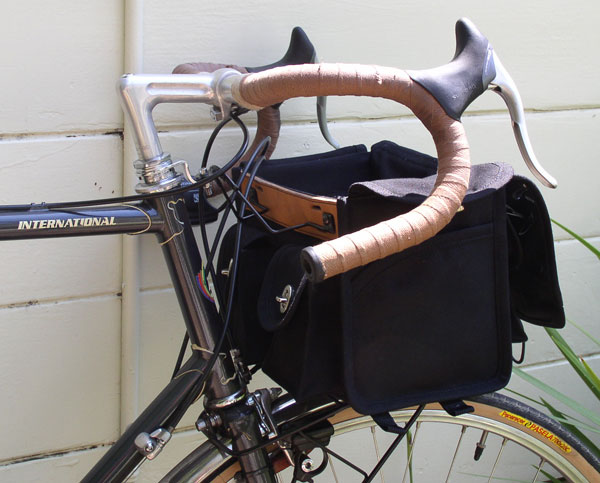
General View.
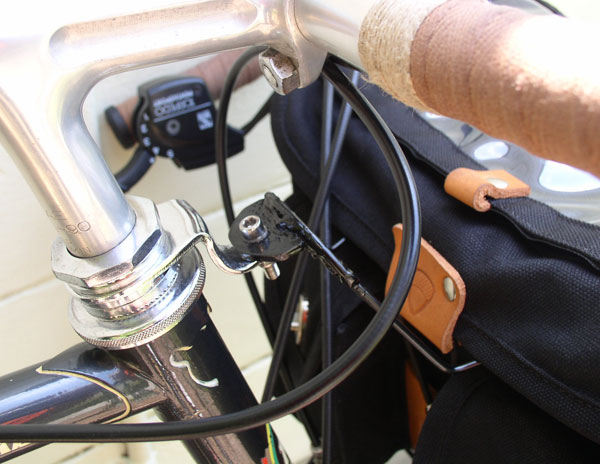
The decaleur in use, bolted to hanger stop.
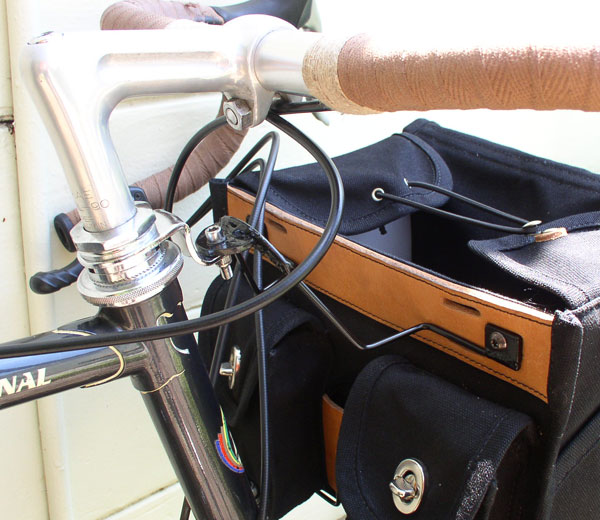
...
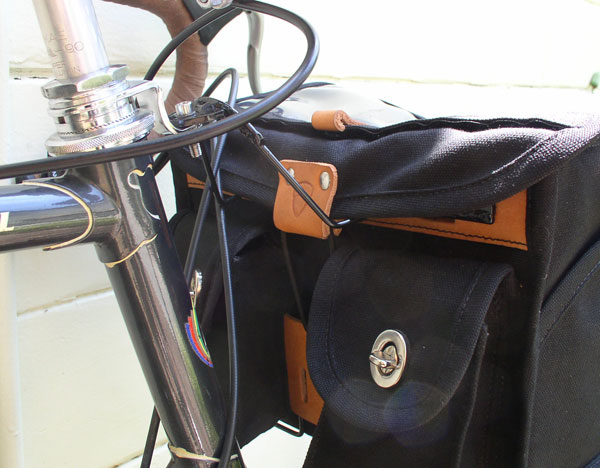
The rod bends downward as it comes back from the bag, to make room for the flap. The clasp comes down in between the stays.

The assembly – doubled rod reinforcement at headset mounting tab.
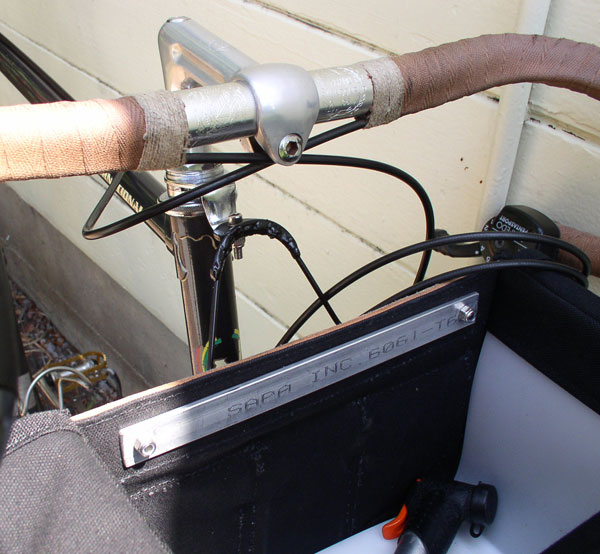
The rod forms a kind of triangle for structural rigidity – a length of lightweight aluminum bar stock reinforces the bag and forms the third side of the triangle.
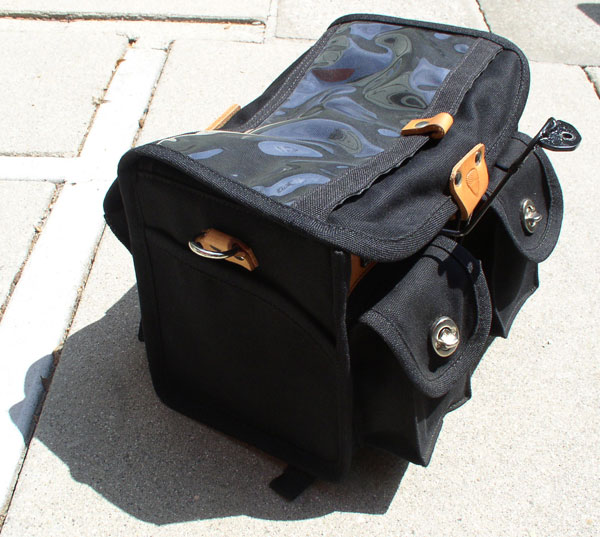
Rather than leave an unsightly cantilevered assembly on the bike like the commercially available decaleurs, the entire decaleur comes off with the bag, leaving the bike clean looking, and providing a convenient carrying handle for the bag.
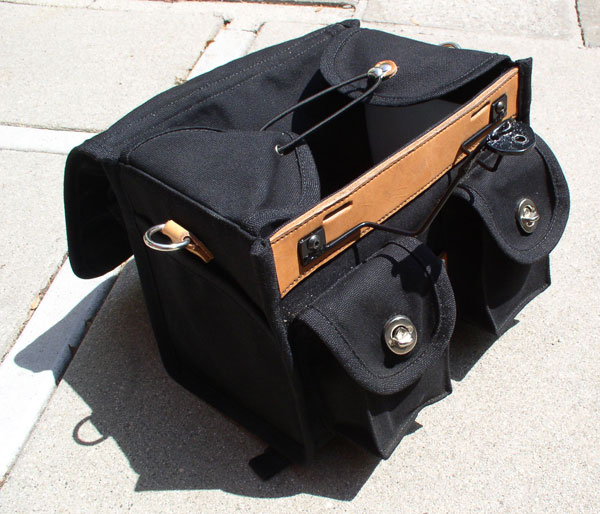
And doesn’t even look too bad (imagine this same design with a higher level of craft and finish).
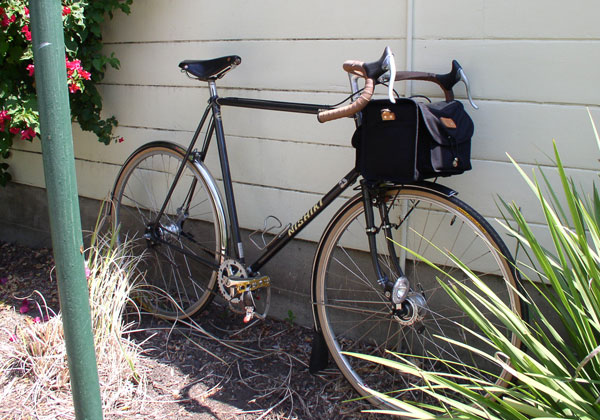
General view of the bike.
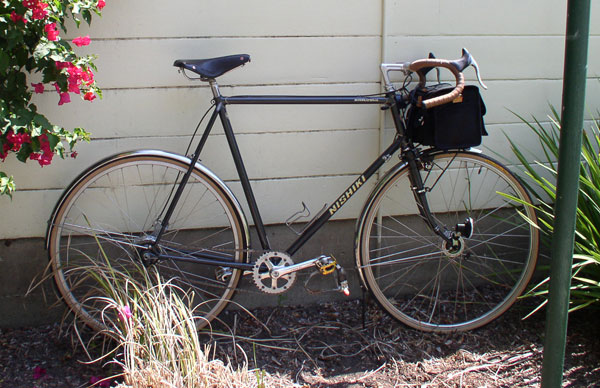
General view of the bike.